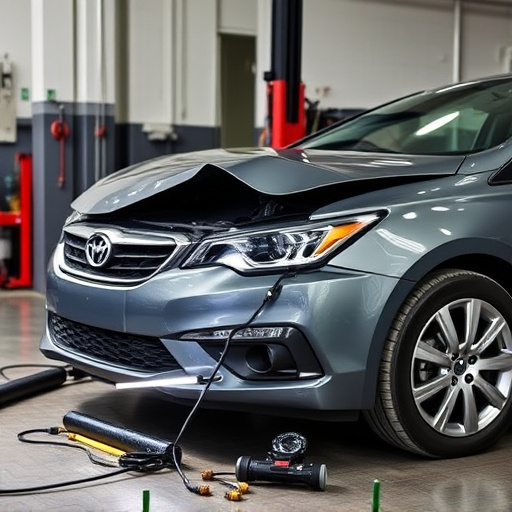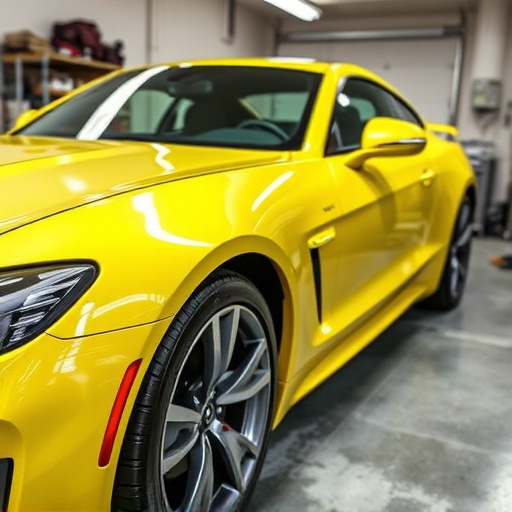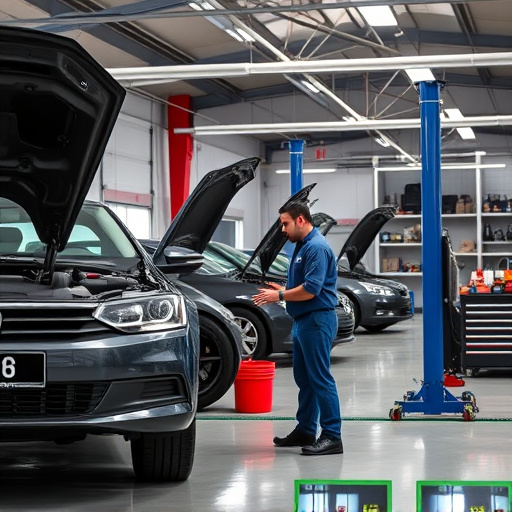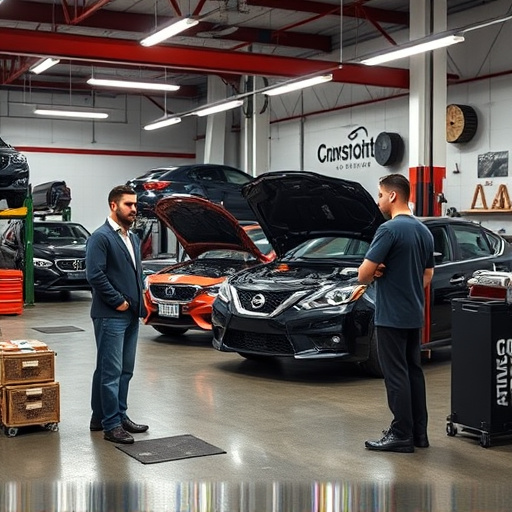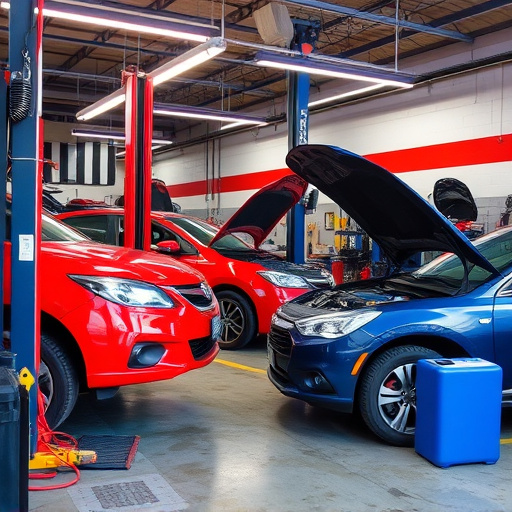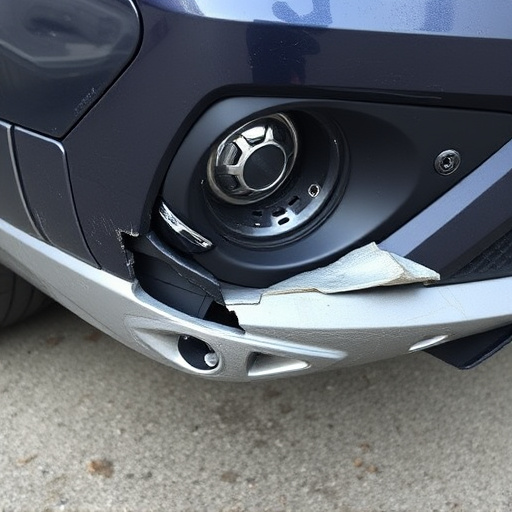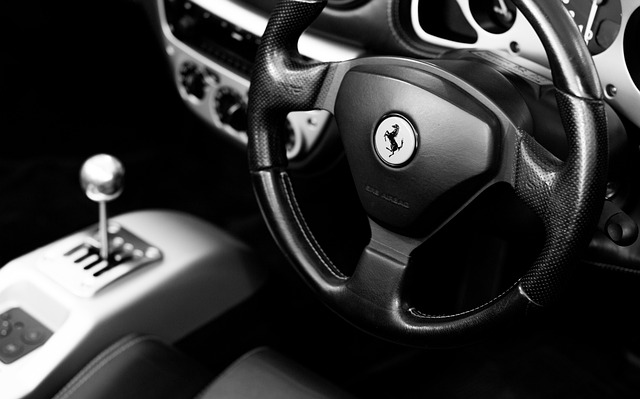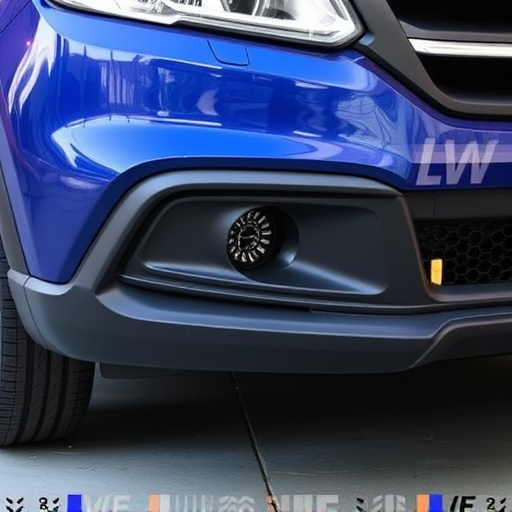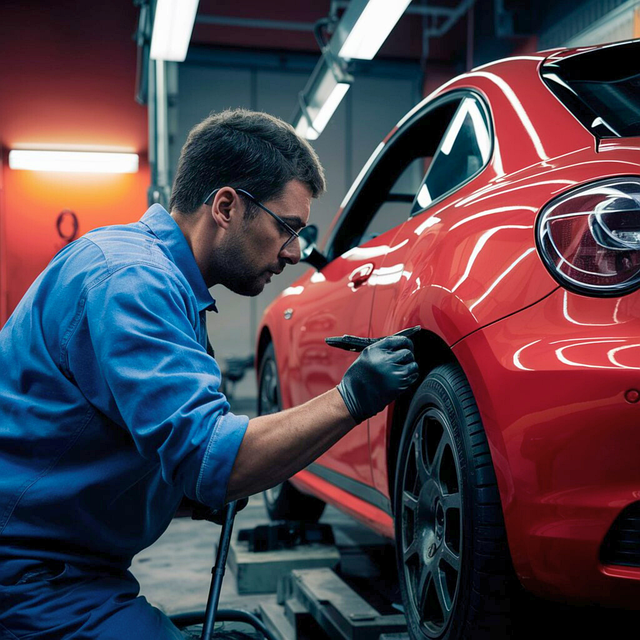Quarter panel dents vary in severity and shape, impacting a vehicle's appearance and safety. Modern repair techniques like Paintless Dent Repair (PDR) revolutionize traditional methods, preserving original paint and minimizing invasive procedures. This guide offers a comprehensive DIY approach to quarter panel dent repair, from assessment to finishing with auto-body filler and sanding.
“Discover expert insights into quarter panel dent repair, a critical skill for maintaining your vehicle’s aesthetics. This comprehensive guide delves into the world of car dent removal, offering a detailed look at various techniques. From understanding common quarter panel dent causes and types to exploring traditional vs. modern repair methods, we provide a step-by-step approach for effective dent mitigation. Whether you’re a professional or enthusiast, this article equips you with knowledge to tackle quarter panel dents.”
- Understanding Quarter Panel Dents: Causes and Types
- Traditional vs Modern Repair Techniques: A Comparison
- Step-by-Step Guide: Effective Dent Removal Process
Understanding Quarter Panel Dents: Causes and Types

Quarter panel dents can range from cosmetic issues to structural concerns, affecting the overall appearance and safety of a vehicle. Understanding their causes and types is essential for effective quarter panel dent repair. These dents often occur due to various impacts, such as collisions, parking mistakes, or accidental bumps. In the case of Mercedes Benz collision repair, for instance, technicians must be well-versed in handling different dent patterns.
There are several types of quarter panel dents: from shallow indentations to deep, complex shapes. Shallow dents might be caused by minor fender benders, while more severe damages can result from high-speed collisions. Collision centers specializing in quarter panel dent repair employ advanced tools and techniques, such as paintless dent repair (PDR), to address these issues efficiently. This non-invasive method is becoming increasingly popular for its ability to preserve the original factory finish, making it a preferred choice over traditional body shop repairs.
Traditional vs Modern Repair Techniques: A Comparison
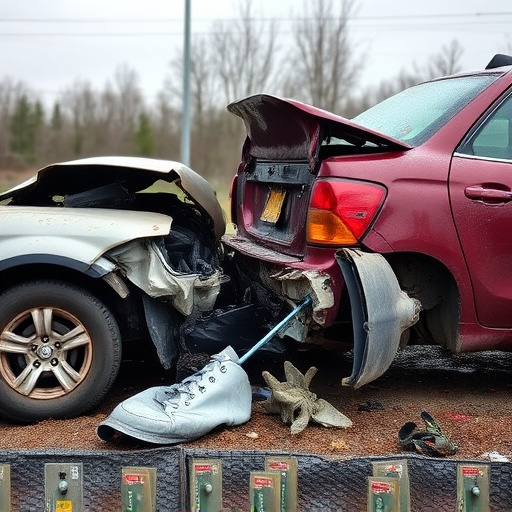
In the realm of quarter panel dent repair, traditional methods have long been the go-to for restoring damaged car bodies. These techniques, often involving hammering and filling, are well-understood and widely practiced in auto repair shops. However, with advancements in technology, modern repair techniques have emerged as game-changers. Using innovative tools and precision engineering, methods like PDR (Paintless Dent Repair) offer a more efficient, less invasive approach.
Modern repair techniques, such as PDR, focus on preserving the original car paint services and avoiding extensive sanding or repainting. This not only reduces the time and cost of vehicle restoration but also maintains the vehicle’s overall aesthetics. In contrast, traditional methods often require more labor-intensive processes, including sandblasting and painting, which can be more disruptive to the surrounding panel and may leave visible traces of damage if not executed flawlessly. As such, modern quarter panel dent repair has gained significant traction among both professionals and DIY enthusiasts for its speed, effectiveness, and minimal impact on the car’s finish.
Step-by-Step Guide: Effective Dent Removal Process
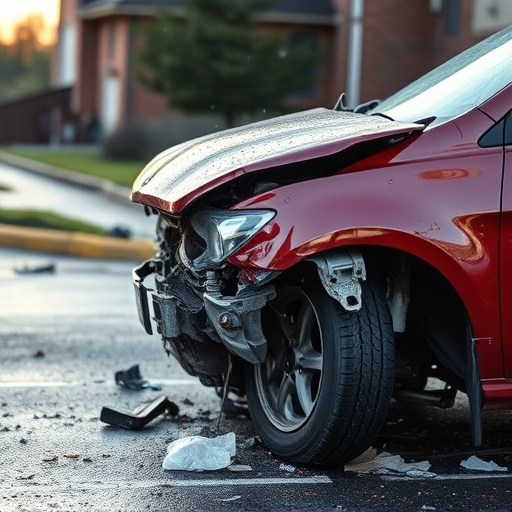
To effectively remove a dent from your car’s quarter panel, follow this step-by-step guide tailored for DIY enthusiasts or those seeking to understand the process before visiting an auto collision center. First, assess the dent’s severity; minor dents can often be fixed at home with simple tools. Prepare your workspace by ensuring adequate lighting and laying down a protective tarp or drop cloth. Gather your materials: a dent puller (a metal tool designed for this purpose), a hammer, a mallet, and a rubber mallet.
Start by placing the dent puller over the dent’s edge, applying gentle pressure to separate the panel from the car body. Use the hammer and mallet to gently tap around the dent, creating space while being careful not to damage surrounding panels or paint. Once the dent is slightly lifted, insert the rubber mallet between the puller and the car body, driving it up to pop out the dent. Finally, smoothen any remaining imprints with a putty knife filled with auto-body filler, allowing it to dry before sanding for a perfect finish.
Quarter panel dent repair is a specialized process that has evolved significantly over time. By understanding the causes and types of these dents, as well as comparing traditional and modern repair techniques, you can make informed decisions for effective dent removal. Following a step-by-step guide ensures precise and efficient results, restoring your vehicle’s exterior to its original condition. Implement these techniques to achieve professional-level quarter panel dent repair.
